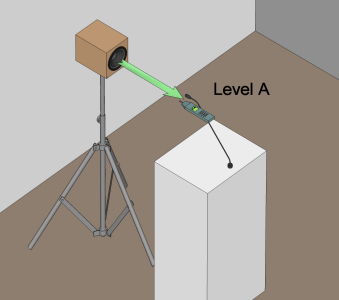
room with sound reinforcement system, microphone and test tone speaker


1. system turned off: test tone level measurement at the microphone - 2. system turned on: test tone level measurement in the room
One effective procedure to evaluate a sound reinforcement system employing microphones is the so called 'maximum loop gain' or 'loop amplification' measurement. It gives a fast and clear indication about the feedback conditions of the system and can easily be reproduced later with different equipment.
This parameter depends on the reverberation time of the room and the frequency range of the system. It is always negative. A value of - 6dB reflects a very good installation in a very dry room, in a room with a reverberation time of about 2 seconds, the gain would be about - 12dB. It is necessary to add a 'feedback safety net' of another 6 dB, that would result in a gain of - 18dB.


With the system turned off, the pink noise source (test tone loudspeaker system) must be adjusted that directly at the microphone capsule a level A will be measured that represents typical talking (e.g. 80 dB/A).
Now with the test tone still running unchanged the system should be turned on with all employed signal processing for regular working conditions to the maximum gain before feedback. At several listening positions in the room (in ear height) the level B should be measured and documented.
The resulting 'Loop Gain' is the difference of the level at the microphone capsule (level A) and the average of all measured levels in the room (level B):
After setting the system to regular working conditions, the signal chain between preamplifier or mixing desk and following amplification will be opened and an electronic measurement system will be inserted into the signal chain, but will not let signal pass through.
By inserting a pink noise measurement signal into the amplification side (to be played back in the loudspeaker system), a certain signal will come back through the input side (microphone, preamplifier etc.). The level difference between the outgoing signal and the incoming signal represents the exact loop gain as measured roughly with the above described method.